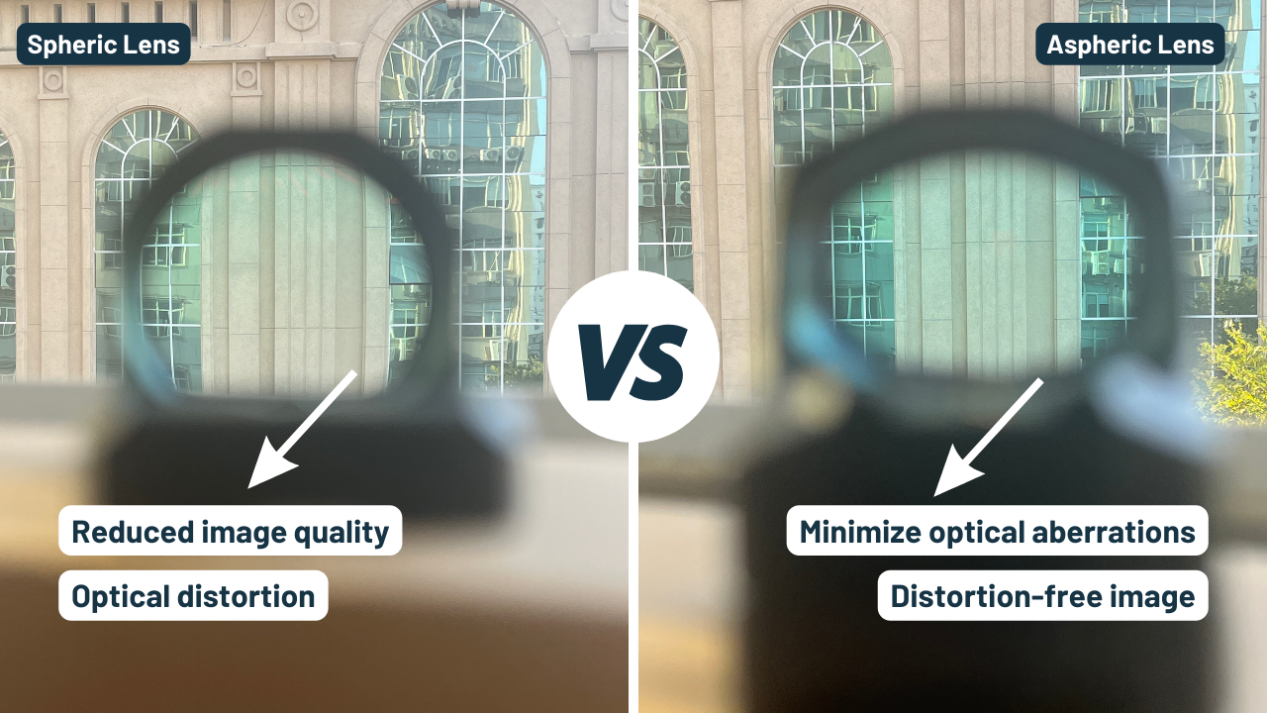When selecting a red dot sight, the choice between spherical and aspherical lenses is critical to performance and application suitability. This article provides a detailed comparison to help you make an informed decision.
What Are Spherical and Aspherical Lenses in Red Dot Sights?
Spherical Lens Red Dot Sights
Spherical lenses are traditional optical components with a uniform curvature across their surfaces, typically shaped as a segment of a sphere. These lenses are manufactured through conventional grinding and polishing processes, with one or both surfaces being concave, convex, or flat.
Aspherical Lens Red Dot Sights
Aspherical lenses feature a non-uniform curvature, allowing for precise correction of optical aberrations. This advanced design enhances clarity and performance, particularly in high-precision applications.

Advantages of Spherical and Aspherical Lenses in Red Dot Sights
Advantages of Spherical Lens Red Dot Sights:
· Cost-Effective: Lower production costs make spherical lenses widely accessible.
· Proven Technology: Reliable for standard applications where advanced optical precision is not paramount.
Advantages of Aspherical Lens Red Dot Sight:
· Superior Optical Performance: Minimizes spherical aberration, coma, and astigmatism for sharper, distortion-free images.
· Lightweight and Compact: Achieves optimal performance with fewer lens elements, reducing weight and size.
· Enhanced Light Transmission: Maximizes light efficiency for brighter and clearer sight pictures.
· Reduced Parallax: Ideal for short focal lengths, improving accuracy in dynamic shooting scenarios.

Disadvantages of Spherical and Aspherical Lenses in Red Dot Sights
Disadvantages of Spherical Lens Red Dot Sights:
· Design Limitations: Prone to optical aberrations (e.g., spherical aberration, coma), which can degrade image quality and cause distortion.
· Bulkier Profile: Thicker lenses result in heavier and less compact sight designs.
Disadvantages of Aspherical Lens Red Dot Sight:
· Higher Production Costs: Complex manufacturing processes increase expenses, reflecting in the final product price.
· Specialized Applications: Best suited for users prioritizing optical precision over budget constraints.
Conclusion
Aspherical lenses excel in optical performance, offering unparalleled clarity and precision for demanding applications. While they come at a premium, their advantages in weight, light transmission, and aberration correction justify the investment for professional users. Spherical lenses remain a practical choice for standard use, providing reliable performance at a lower cost.
